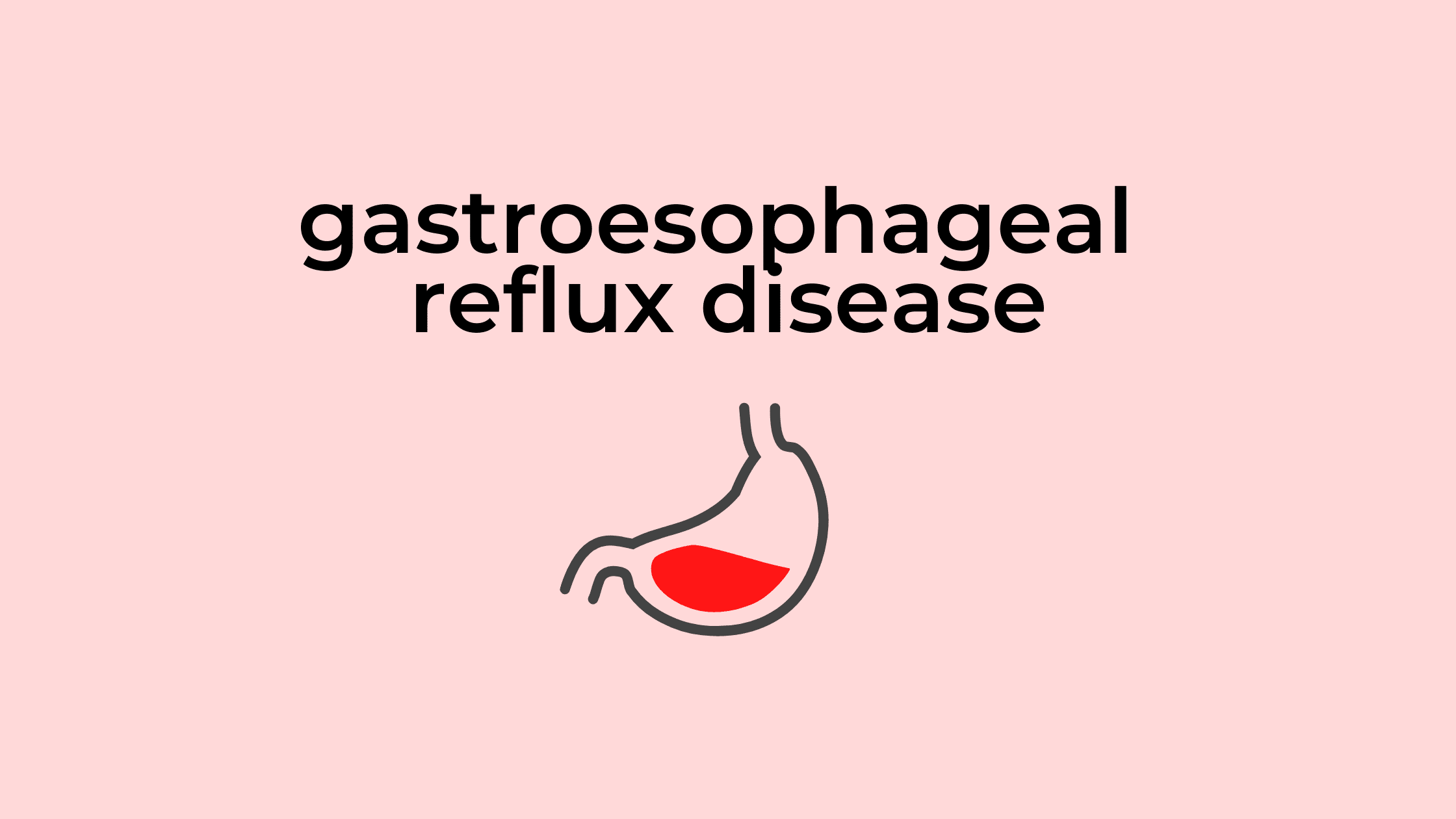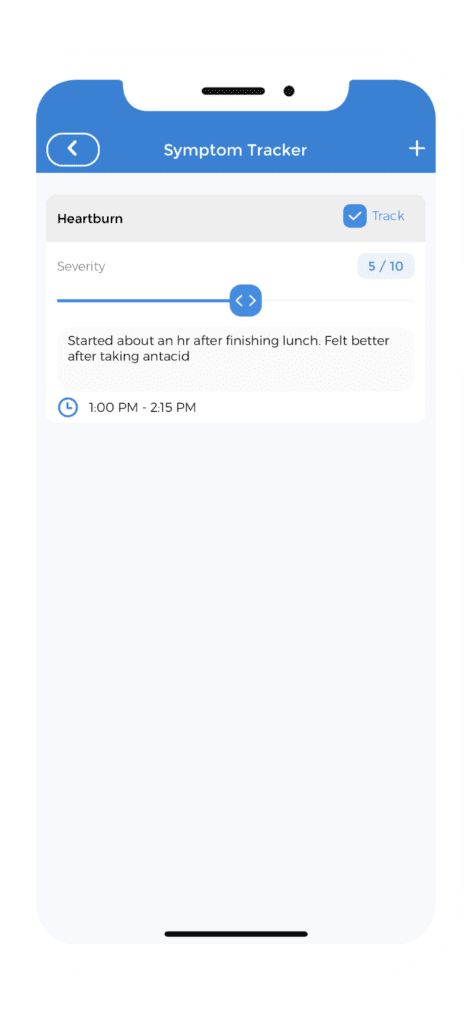 It is not unusual for an individual to experience heartburn once in a while. However, those who have heartburn frequently may have something called GERD, short for gastroesophageal reflux disease. GERD is the most common diagnosis of gastrointestinal disease in the United States and has about 18.1%-27.8% of occurrence in North America. With inadequate management, individuals diagnosed with GERD usually experience a decreased quality of life, pain, poor emotional health, and poor physical and social wellbeing.
It is not unusual for an individual to experience heartburn once in a while. However, those who have heartburn frequently may have something called GERD, short for gastroesophageal reflux disease. GERD is the most common diagnosis of gastrointestinal disease in the United States and has about 18.1%-27.8% of occurrence in North America. With inadequate management, individuals diagnosed with GERD usually experience a decreased quality of life, pain, poor emotional health, and poor physical and social wellbeing.
How is GERD diagnosed?
Generally, a doctor will start by asking about the patient’s health history, including their usual clinical symptoms. Patients with a GERD diagnosis typically present with frequent heartburn, which is described as a burning feeling around the chest. Acid regurgitation is another common symptom, where a person experiences a sour taste at the back of their throat. Many individuals who experience chest pain for non-cardiac reasons are often due to GERD. Other less well-known symptoms include a hoarse throat due to acid reflux into the larynx – also known as your voice box, and a lump sensation in the throat (R).
Diagnosing Symptoms and Treatments
Medical practitioners usually prescribe a class of medications called proton pump inhibitors (PPIs). Examples of PPIs include, but are not exclusive to medications that end in the “-prazole” suffix, such as lansoprazole or pantoprazole. PPIs alleviate symptoms of GERD by reducing stomach acid production, but not to an extent that will disrupt the digestion of food. Individuals with GERD will typically experience alleviation from GERD symptoms from taking PPIs, in which case will also confirm the diagnosis (R).
If symptoms are not improved despite a high dosage of a PPI, the practitioner may order diagnostic tests, to rule out any complications related to GERD. A gastrointestinal endoscopy is a commonly ordered test – a scope that is placed into either your nose or mouth, and down into your esophagus to look at the inner esophageal lining for any sort of inflammation or erosion. Another diagnostic test, which can be done as an outpatient procedure, is to examine esophageal pH. A pH probe, available either as a tube or a wireless capsule is inserted into the esophagus for 24 to 48 hours. If the esophageal pH is less than 4 in relation to the amount of time the pH probe has been in the esophagus, it is enough to confirm a GERD diagnosis (R).
Heartburn VS Acid Reflux
Normally, when a person swallows food, it travels down to their stomach via a tube, known as the esophagus. There is a muscle between the end of the esophagus and the opening of the stomach, called the lower esophageal sphincter. The lower esophageal sphincter acts as a valve, opening and closing after food enters the stomach. Acid reflux occurs when gastric contents, also known as stomach acid, can flow backwards into the esophagus if the sphincter does not close proper or if it opens too frequently. This results in the feeling of heartburn.
Individuals with GERD often experience symptoms such as heartburn due to the increased occurrence of acid reflux. Usually, this is because the lower esophageal sphincter is relaxed too often or gastric emptying – which is when your stomach contents are emptying into your small intestines, happens too slowly. This increases the amount of stomach acid, which can affect the opening and closing function of the lower esophageal sphincter, contributing to symptoms of GERD.
Using CareClinic to Track Your GERD Symptoms
CareClinic is an app designed for users to keep track of their health. It is available on iOS and Android smartphones. The app includes features ranging from recording your symptoms, medications, stress levels, to everyday nutrition. The CareClinic app has a symptom tracking feature that allows you to enter your GERD symptoms. When you perform a daily Check-In, you can easily rate these recurring symptoms on the app on a severity scale of 0 to 10. You can also document the time you are usually experiencing these symptoms.
When you consistently make entries, you will be able to review the logs, charts, and correlations, using smart analysis. This data may give you a suggestion as to how your GERD symptoms may be being triggered. Personalized insights are another feature of the app where you can use suggestions to make lifestyle changes to improve your symptoms. When you click into the symptom, you can also document specifically what date the symptom first started, and link it to a specific care plan of your choice. Also, there is a Notes section for you to include any additional information related to a specific symptom.
How to Get Rid of Heartburn

One of the best ways to manage your GERD diagnosis is to make lifestyle modifications. There are a lot of simple lifestyle changes that can help alleviate common GERD symptoms. You can help ease symptoms
such as heartburn and acid regurgitation by making the below changes and more:
- Avoid lying down or sleeping within three hours of a meal – To minimize the instances of backflow of stomach acid. Staying in an upright position will help prevent disruptions to lower esophageal sphincter function (R).
- Set a goal for weight loss – Studies have shown that individuals with an increase of body mass index (BMI) have an associated risk of developing GERD, and that obesity is one of the greatest risk factors of developing GERD, including the exacerbation of symptoms for those already diagnosed (R).
- Avoid smoking, alcohol, big meals or snacks at night, and a high dietary fat intake – These activities promote transient lower esophageal sphincter relaxations – which can affect the control of lower esophageal muscle, increasing the instances of acid reflux (R).
- Sleep with your head elevated and sleep on your right side – This reduces the exposure of esophageal acid, effectively minimizing the presentation of classic GERD symptoms (R).
- Try to avoid taking NSAIDs (non-steroidal anti-inflammatory drugs) – Medications such as Advil or Aleve. They have side effects which can reduce the protective properties of the mucosa lining, further causing mucosal irritation.
- Take your GERD medication as prescribed – Most people with mild to moderate GERD symptoms respond well to proton pump inhibitors when taken as prescribed by their practitioner. Taking your proton pump inhibitor 30 to 60 minutes before your meals show the most effect in improving GERD symptoms (R). Medication use is also helpful in preventing further damage to the esophageal mucosa lining.
Remind Yourself to Take Your Medication Using the CareClinic App
With the CareClinic app, you can add your GERD medication with the Medicine & Supplements feature. In the app, you can set the time that you have been prescribed to take the medication. You can then use the daily Check-In feature to check off the Taken checkbox once you have consumed. This will help ensure that you’ve taken your medication. When you add a new medication, you can also add a photo of the pill or pill bottle. This will ensure that you do not mix it up with other medications.
You can also customize the Dose Form to specify whether it is a capsule or pill. You can also provide a color code to the medication. If your medical practitioner has prescribed an end date to this medication, you can also add that to the app. You can then add a medication reminder and also a refill reminder. This way you will always receive a reminder when it is time to refill your medication at your pharmacy.
Another great benefit of the CareClinic app is the Medication Library. Here you can learn further in-depth about all the medications you are currently taking. Also, there is a feature where you can add your own personalized care team. This is an excellent feature for your family or friends to remind you to take your medications. Your medical care team, such as family doctors and nurses can also keep track of your overall health. On the other hand, you may have someone who may have medical conditions and medications. You can also use CareClinic to keep track of their health and help promote their healthy wellbeing!
Acid Reflux Diet Menu
If you have received a GERD diagnosis, there are certain foods that contribute to acid reflux, thus provoking further GERD symptoms. Some modifications to your everyday diet can provide some relief in bothersome GERD symptoms. Try to make the following adjustments to your dietary intake:
- Avoid foods high in dietary fat – These foods allow for more transient lower esophageal sphincter relaxation – which slows the time it takes for the stomach to empty its contents, promoting the possibility of acid reflux (R).
- Avoid spicy foods – spicy foods directly contribute to the further irritation of the lower esophageal mucosa lining. This can trigger heartburn for those who already have damage to inner lining due to GERD. Red peppers have the neurotoxin capsaicin, which also slows down the process of stomach emptying (R).
- Try to minimize foods high in sodium – After the consumption of foods high in sodium, studies in the past have shown its effects of slowing gastric (stomach) activity and delaying the emptying of stomach contents, increasing the chance of acid reflux.
- Reduce lactose intake – dietary intake of lactose showed increased instances of acid reflux due to more lower esophageal muscle relaxation.
Use CareClinic to Maintain a Food Diary to Manage GERD Symptoms
Using the CareClinic app, you can customize a CarePlan that tracks your everyday diet. You can use the daily Check-In feature, to keep track of your meals. You will also be able to monitor the amount of carbohydrates, fat, and calories consumed for each meal. Most recipes show you nutritional information, you can directly plug in the numbers into the Nutrition section of the app. For each item consumed, there is also a Notes section. In this section you can add personal notes on how you feel after the consumption of the food item. This is an easy method for you to keep an eye on which foods improve or worsen your GERD symptoms.
You can also utilize the Diary feature to write about how certain foods improve or aggravate your GERD symptoms. There is also an option to Attach a Photo when you create a diary entry. So for those who are visual users, you can take a photo of your meals to personalize your entries.
It’s not easy to make dietary changes. You can always start by adding Nutrition entries on the CareClinic app, based on your current meal plans. After a few Check-Ins, be sure to review your entries to see which meals may have worsened your GERD symptoms. You can then slowly start to make changes to those meals. You can begin to incorporate foods that seemed to have helped improve your GERD symptoms.
The many features found on the CareClinic app can work together to help you manage your GERD diagnosis.


